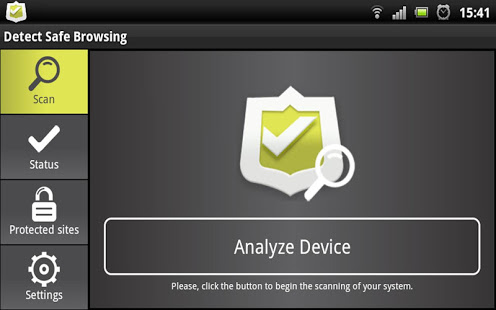


EASY SOLUTIONS DETECT SAFE BROWSING REAL OR FAKE HOW TO
Check the Contact Pageįor how to tell if a website is legit is to verify whether the website has a physicalĪddress. Click on more information and then view certificate. For Firefox, click on the padlock and then on the arrow to show connection details. To view the digital certificate issued to the website, click on the padlock in the web address bar and select Certificate if using Google’s Chrome browser. This is why SSL/TLS certificates offer different validation levels. But even if the site uses HTTPS, it doesn’t automatically guarantee safety. Look at it this way: While it’s a no brainer that if your browser flags a website as “not secure,” no sensitive information should be entered on the page. Itself malicious, the S in “HTTPS” will do very little to ensure security. Server you are communicating with will not steal your data. Means that the communication channel between you and the server is encryptedĪnd secure (i.e., an attacker listening in on the network will get garbledĮncrypted information that won’t make sense). If a trust seal is legitimate, clicking on it will take you to a page that verifies the authenticity of that seal. It is a stamp granted by a security partner (such as a certificate authority, or CA) that’s indicative of the legitimacy of the website. Rule of thumb is to pay attention, use good judgment when browsing, and look outįor signs that can help you gauge the credibility of the website.Ī trust seal attempts to communicate to you as an end user that the website they’re on is safe, and that the business itself views security as a priority. Or click on the advertisement flashing in some corner of your screen. Paranoia grip you right before you visit a website your friend told you about It’s therefore understandable if you feel the Moment, be in contact with a cybercriminal or fall victim to a phishing attackĪnd be none the wiser about it. Given the nature of our digital existence, we could, at any With the numbers rising every year, and scammers finding ingenious new ways to commit cybercrimes, it’s imperative to learn to recognize these forms of attacks. alone, and 23,439 scams have already been reported in 2019. This is why every one of us needs to know how to tell if a website is legit.Īccording to the Better Business Bureau (BBB) Scam Tracker, there were 48,362 scams in 2018 in the U.S. Now, more than ever, not only can we buy our groceries online, but we also run the risk of falling prey to a web of intricately woven scams and lies - all from the comfort of our couches. However, it has also made us susceptible to the dangers of the digital world. The advent of the internet, just like technology, has eased the way we lead our lives.


 0 kommentar(er)
0 kommentar(er)
